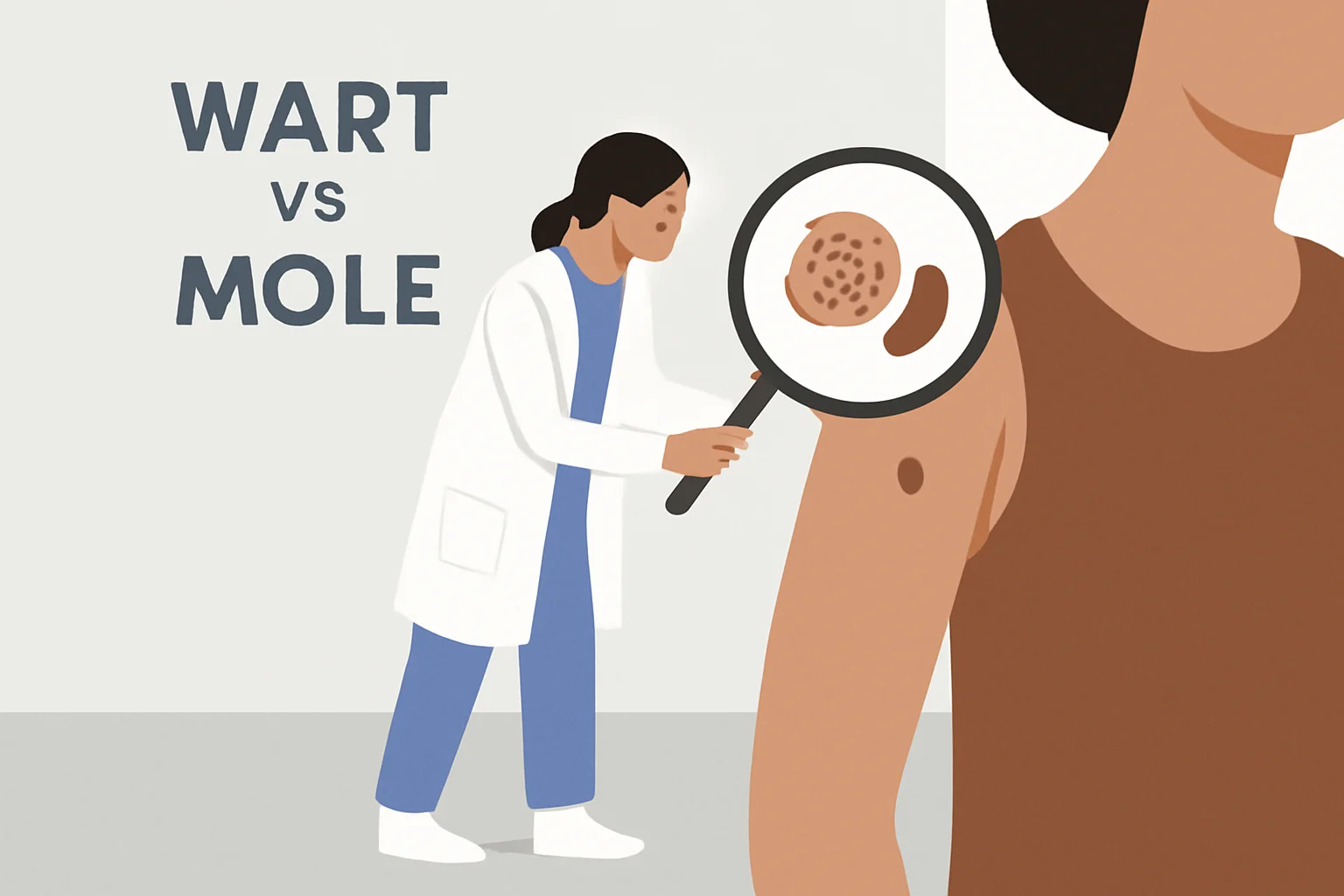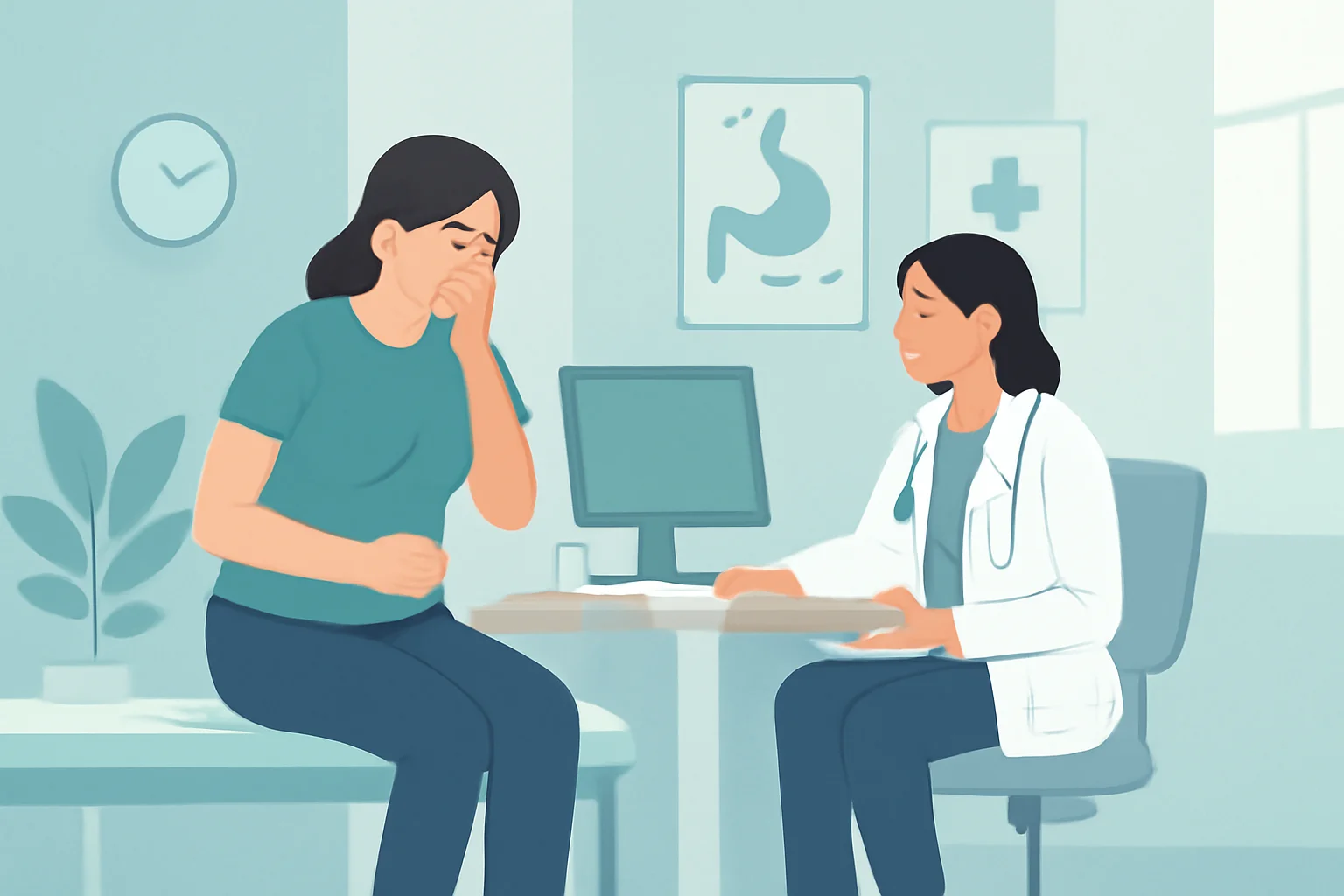
Wart or Mole: When Should You See a Doctor?
The skin is one of the largest sensory organs, constantly exposed to external influences. Therefore, it is not surprising that various lesions, such as warts and moles, often appear on it. These skin problems are familiar to many, and while they are mostly harmless, it is important to know the differences between them and how to distinguish them. Warts are viral lesions, while moles originate from the skin’s pigment cells, the melanocytes. The appearance and characteristics of these two skin lesions differ, making accurate diagnosis crucial not only from an aesthetic standpoint but also for health reasons.
The condition of our skin reveals a lot about us, and noticing skin lesions often raises concerns. Many seek information on how to differentiate warts from moles and when medical intervention is necessary. Dermatology is constantly evolving, and it is essential to know that it is always advisable to consult a specialist regarding skin lesions. Proper self-care and maintaining skin health require an understanding of the nature and treatment of these two lesions.
Warts: Symptoms and Causes
Warts are small, rough-surfaced skin lesions that typically develop due to viral infections, particularly the human papillomavirus (HPV). These lesions can appear in various shapes and sizes: they can be smooth and flat or, conversely, resemble cauliflower. The most common areas where warts appear are the hands, feet, knees, and nail beds.
The appearance of warts is generally painless, but in some cases, especially if they are located on the foot, they can cause discomfort. The viruses that cause warts can spread easily, increasing the risk of infection through direct contact, such as in baths, swimming pools, or using shared towels.
Warts can often disappear on their own, but many seek treatment options. Treatment methods include freezing, laser therapy, and the use of topical medications. However, it is important to note that the removal of warts does not always guarantee that they will not return, as the virus may hide in the deeper layers of the skin.
Moles: Characteristics and Warning Signs
Moles, also known as melanocytic lesions, develop from the skin’s pigment cells, the melanocytes. These skin lesions typically appear as brown, black, or skin-colored spots and can be flat or raised. Most moles are harmless and do not require medical intervention, but it is important to monitor any changes in them.
Dermatologists generally recommend the “ABCDE” rule for checking moles. “A” stands for asymmetry; if one half of the mole does not match the other, it may be suspicious. “B” refers to border; if the edges of the mole are jagged or irregular, it is advisable to consult a specialist. “C” pertains to color; unevenly colored moles can also be a cause for concern. “D” indicates diameter; if the mole is larger than 6 mm, it should be checked. Finally, “E” refers to evolution; if there are any changes in the appearance of the mole, it is recommended to see a doctor.
The appearance of moles is normal, and many people have dozens of them. However, due to the risk of skin cancer, it is crucial to thoroughly examine any suspicious lesions that change rapidly, bleed, or become irritated.
The Importance of Distinguishing Warts and Moles
Differentiating between warts and moles is crucial, as while warts are generally harmless, a mole can become malignant. An incorrect diagnosis can have serious health consequences.
Although the appearance of the two lesions may be similar, their color, texture, and shape differ. Warts, as mentioned, have a rough surface, while moles have a smoother, more even appearance. Dermatologists recommend regular skin checks, and if any changes are noticed, it is essential to consult a doctor immediately.
To make a diagnosis, a dermatologist may examine the skin lesions and, if necessary, perform further tests such as a skin biopsy. Timely diagnosis is crucial, as early-stage skin cancer is much more treatable.
Maintaining healthy skin requires regular skin examinations, especially if there is a family history of skin cancer. Protection against sun exposure, proper skincare, and regular skin checks all contribute to preserving skin health.
Attention: This article does not constitute medical advice. In case of health issues, everyone should only follow their doctor’s advice.

